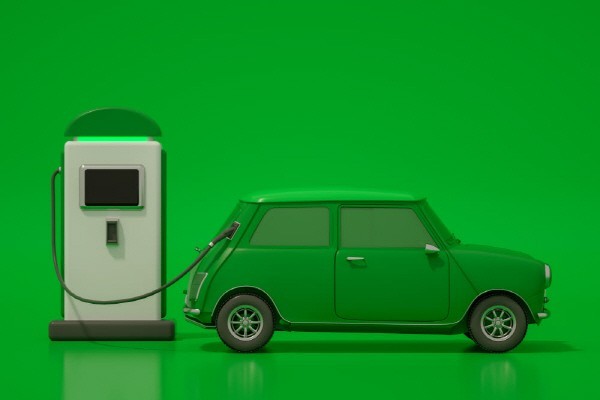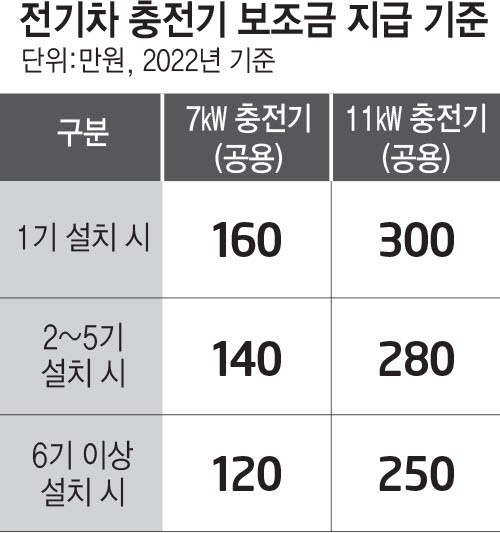The government will lower the subsidy for slow chargers (7kW) from KRW 2 million to KRW 1.3 million from this year. As the number of cases of recklessly installing chargers with the subsidy is increasing, the government decided to increase business feasibility by paying them with their own funds. However, the government will establish a subsidy for an 11kW charger, and set a subsidy of KRW 2.5 million for the faster chargers. The 7㎾ product is unavoidable to be borne by the business, but the 11㎾ product generates a profit of at least 10%. Operators are already frantic about finding 11kW products instead of 7kW. There is a growing voice that the government subsidy policy is not consistent.

According to industry sources on the 18th, the Ministry of Environment recently disclosed the subsidy support standards of 30 domestic slow charging companies this year. The subsidy for 7kW slow chargers has been lowered from KRW 2 million last year to KRW 1.3 million. On the other hand, an average subsidy of KRW 2.5 million is established according to the number of installed 11kW slow chargers. The Ministry of Environment has decided to invest KRW 74 billion in this year's budget to supply 7kW and 11kW slow chargers.

The charging industry is welcoming the new 11kW slow charger this year. As the subsidy unit price decreased every year, charger businesses expected to pay their own expenses; however, installing the 11kW products can help the businesses to save money.
An official from the charger manufacturer said, “Businesses will be burdened by about KRW 500,000 even if subsidized for installing 7kW products, but 11kW products can save at least KRW 200,000 to 300,000. It is not difficult to make a profit with 11kW products by the operators who have reduced the price of performance and parts in line with the reduced subsidy unit price.”
In fact, the current 7kW class slow charger price is in the range from KRW 700,000 to 800,000, to KRW 1.6 million to 1.7 million, including construction costs (KRW 800,000-900,000) and outsourcing operating expenses (KRW 200,000). Depending on the construction site, if KEPCO payment (KRW 500,000) and various administrative expenses such as operation server and maintenance are included, then the extra costs by the operators is unavoidable. On the other hand, the price of 11kW products is only KRW 100,000 to 200,000 more expensive than that of 7kW, and KEPCO cost is about KRW 100,000 won. Hence, there is no big difference in installation and construction costs.
The Ministry of Environment explained that the subsidy for the 11kW charger is mainly for electric vehicle users who visit supermarkets or distribution facilities where they stay for 1-2 hours. An official from the Ministry of Environment said, "There is no limit to installation location for the 11kW charger, but we will induce supply to distribution stores where users stay for a short period. Through subsidy evaluation, we will prevent cases of indiscriminately installing chargers.”
The charging industry predicts that even if the subsidy price per charger decreases, the number of cases will increase in which charging companies try to pay the insufficient cost with cheap chargers or construction costs rather than bear additional costs.
An industry official said, “The electric vehicles charge while parking, it is more effective to install three 7kW products than two 11kW products. However, competition for supplying 11kW chargers with subsidies will be more ferocious."
By Staff Reporter Tae-joon Park (gaius@etnews.com)